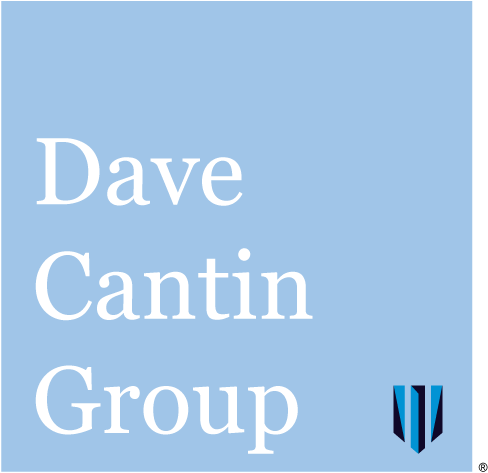It is essential to have a solid foundation for any succession plan, particularly in the dealership-based industries. Many challenges face the automotive sphere as the industry evolves to a future based on electric vehicles. The very survival of today’s dealerships depends on having the right plan. Proper succession planning for auto dealerships allows for a smooth transition and continued success of these enterprises.
At the Dave Cantin Group, one of our key goals is to help professionals in the dealership-based industries, including automotive, heavy trucks, motorcycles, powersports, and RVs, build and maintain their legacies. And a solid succession plan is the best way to make sure a beneficial legacy outlives you. Get in touch with us today to speak with our experienced professionals on succession planning or read further to learn more about the most important aspects.
Related: Navigating Obstacles in Auto Dealership Succession Planning
What is an automotive succession plan?
An automotive succession plan is a blueprint for assuring the future of your automotive business. It includes selecting, preparing, and installing the next generation of leadership and management. Succession planning for auto dealerships is a key part of the company’s long-term business strategy, designed to ensure its ongoing success.
Leadership Development for Succession Plans
Leadership development is a primary building block of a successful succession plan, providing a smooth and continuous flow of leadership and management. It starts with the identification of potential leaders within the organization, followed by positioning those individuals for such future responsibilities. Leadership development should also incorporate leadership training programs to develop essential skills, while also allowing for mentoring and coaching opportunities for leadership candidates. Done diligently, this strategy can assure an excellent supply of top talent for years to come.
Technical Skills Transfer
The transfer of all necessary technical skills will ensure that the new leadership can access all needed automotive knowledge and technical skills that will be required to operate the company. Loss of a key technical employee can disrupt a company as much as that of a top executive. One strategy is to cross-train employees so that they can perform a variety of roles in different departments. Another is to put into place some robust knowledge retention strategies, so that retiring experts across the organization do not take their institutional knowledge out the door with them. Detailed documentation of the roles of employees who may be resigning can also be used to preserve key relationships with partners located both inside and outside of the company.
Talent Pipeline
As part of a succession plan, it is essential to develop a talent pipeline to fill all critical roles. This includes identifying employees with high potential who could be slotted into future leadership positions. A thorough evaluation of all relevant talent will help to achieve this, along with training programs to prepare these future leaders. This talent pipeline may also need to be supplemented by external talent, which will require both recruiting and onboarding strategies to fill those positions.
Skill Gaps Analysis
The rapid advance of technology has led to a great need for employees to upgrade their abilities. Proper dealer succession planning requires the identification of any skill gaps that exist within the organization. This starts by assessing the competencies and the skills required for the company’s future success and then bridging any gaps in those needed skills through targeted training as well as development programs that provide the needed experience. Doing this will help to prepare the company for the future that awaits.
Performance Management
Managing the performance of your employees begins with the implementation of appropriate processes for both feedback and appraisal of their performance. It should continue through the recognition and rewarding of your top performers, while also allowing for the creation of improvement plans that will address the needs of any underperforming employees. Performance management can be used to identify the most promising employees who are interested in advancement within your company; their development of their talent should be prioritized so that they can evolve into the next generation of corporate leaders.
Diversity and Inclusion
Promoting diversity in your leadership succession planning for auto dealerships is an integral part of the process. Talent isn’t affected by background or gender, so you can only ensure you’re finding all the potential greatness you can by looking into all your employees. Encouraging members of underrepresented groups to participate in your leadership development programs ensures a fair and inclusive process for succession. It also provides you with a C-suite and upper management structure that’s more representative of your company and community as a whole, leading to better morale and fuller perspectives. Selecting top leaders who are focused on change in this area will help to accelerate the transition to greater representation across your entire organization.
Employee Engagement
The better that your employees feel about all aspects of their work lives, the more engaged they will be in performing well on the job. Maintaining a high level of employee engagement provides many benefits to a company that is in the midst of a succession plan. It starts with the creation of a positive culture and work environment that fosters the development of talent. It continues through the recognition of high achievement and addressing of your employees’ concerns and feedback. Employee engagement equals high performance, results in a thriving business, and translates directly into bottom line benefits.
Knowledge Transfer
Creating the systems that are needed for the capturing and sharing of a company’s institutional knowledge are crucial to the execution of a succession plan. A great deal of expertise can be lost when a person in a key role leaves the organization for any reason. Achieving successful knowledge transfer involves documenting the company’s processes, best practices, and industry insights, as well as facilitating the transfer of essential institutional knowledge between retiring employees and their successors.
Succession Policies and Procedures
Clear policies and procedures for dealer succession planning need to be established. This involves defining the necessary roles, responsibilities and timelines, along with ensuring compliance with all legal and regulatory requirements. Leaders who are used to focusing on the current quarter’s results must be willing to take a longer view to achieve a succession plan that works for the entire organization.
Crisis Management and Contingency Planning
Succession planning for auto dealerships does not always proceed according to plan. It is wise to develop contingency plans for any unexpected departures of key personnel, as well as any emergencies that may befall them. Should this happen, disclosure obligations need to be balanced by privacy concerns. Identifying backup successors and interim leadership solutions will provide for the continuity of the business if any “adjustments” need to be made during the transition. It is important that these successors are not only ready to step into their new positions but are also perceived that way by the market and other outside forces.
Communication and Transparency
Effectively communicating with your employees about the succession plan will enhance its success. There should be transparency about the selection process as well as the criteria used to choose the candidates for upcoming leadership roles. This is an excellent opportunity to keep all employees moving forward together positively in support of the succession plan. It is also important to address all of the employees’ questions and concerns regarding the succession process. As the saying goes, “Sunlight is the best disinfectant!”
Technology and Automation
Leveraging current technology for talent assessment, tracking, and development can make the dealer succession planning process much easier. This includes using data analytics for predictive succession planning, along with software tools that will streamline the entire process. Integrating succession planning systems with talent management programs also helps candidates to perform better in their upcoming roles.
Benchmarking and Industry Trends
It is extremely beneficial to stay informed about industry best practices in succession planning for auto dealerships. You should be benchmarking your company against both your competitors and the leaders in the automotive sector, while adapting strategies that align with changing industry trends. This practice can generate generous dividends in areas such as operational efficiency, reaching strategic corporate objectives, and innovation.
DCG can make your succession plan a successful one
Careful consideration of all these factors is crucial as you develop an effective succession plan for your automotive business. At the Dave Cantin Group, we fully understand what it takes to develop, present, and roll out a succession plan that aligns with your goals, values, and vision.
Contact our team today to get started on discussing a comprehensive succession plan for your organization.
Read more about Succession Planning:





